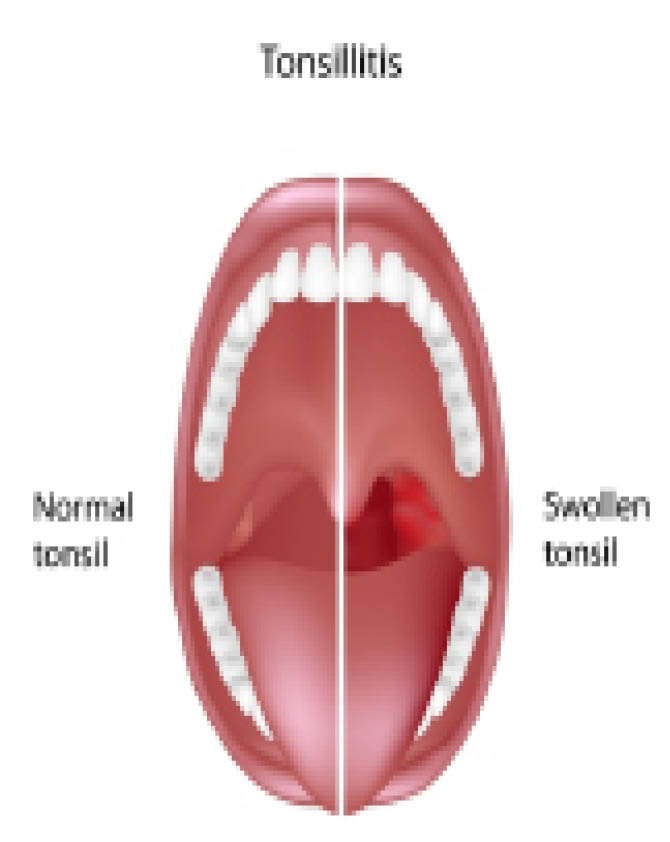What you should know about tonsillitis
Amina Saliu (not real names) doesn’t have tonsils. She recalls that her tonsils, called belu in Hausa language, was removed when she was a baby through a traditional doctor (wanzami). The tonsils are two round, fleshy masses in the back of your throat. They help to filter out bacteria and other germs to prevent infection […]

tonsillitis
Amina Saliu (not real names) doesn’t have tonsils. She recalls that her tonsils, called belu in Hausa language, was removed when she was a baby through a traditional doctor (wanzami).
The tonsils are two round, fleshy masses in the back of your throat. They help to filter out bacteria and other germs to prevent infection in the body
According to Dr Hajara Saleh Bade, tonsillitis is a common condition that affects people of all ages.
Dr Hajara, who is a dentist and Chief Executive Officer of Advance Dental Clinic, explained that tonsillitis is the inflammation of the tonsils, which is characterised by sore throat and fever.
- 2027: We are working to bring Kwankwaso, Obi back into our fold – PDP
- Doyin Okupe: Why I dumped Obi for Tinubu
She said the tissues play a crucial role in protecting the body from infections by trapping bacteria and alerting the immune system to fight off bacteria.
“When the tonsils detect bacteria, they trap it and alert the immune system. This immune response is what causes the tonsils and surrounding areas to become red and inflamed, leading to tonsillitis, “ she said.
According to her, while bacteria are the most common cause of tonsillitis, viruses and fungi can also be responsible.
She said the symptoms of tonsillitis typically include sore throat, difficulty swallowing, bad breath that is halitosis, fever and swollen lymph nodes (jugulodigastric), which may cause neck stiffness and pain.
“However, in some cases, patients may experience headaches, voice becoming thick and muffled, and loss of appetite,” She said.
To diagnose tonsillitis, Dr Hajara emphasised the importance of symptom observation and clinical tests.
“To detect any infection in blood, full blood count is done, throat swabs (a sample of secretion taken from the back of the throat) or Monospot and Epstein-Barr to detect certain antibodies that aid in diagnosis,” she said.
The dentist said treatment could vary from medical to surgical intervention.
She said the medical treatment often involves antibiotics, pain relievers, like paracetamol or ibuprofen, and home remedies such as gargling with warm salt water.
“While the surgical intervention, which involves tonsillectomy (removal of the tonsils) or tonsilloadenoidectomy (removal of both tonsils and adenoids, can be considered) in case of chronic tonsillitis with three or more episodes in a year, or when the tonsils become so enlarged that they obstruct the airway making it difficult to breathe,” she explained.
The dentist dispelled common myths, such as the belief that cold drinks or ice blocks are the primary causes of tonsillitis, clarifying that bacterial or viral infections were the main culprits.
She also addressed misconceptions about tonsillitis, particularly the belief that enlarged tonsils always required removal.
She advised against the practice of removing the tonsils saying, “The tonsils are one of the body’s defense networks and they produce immune cells and antibodies that help to filter the germs that cause infections.”
She said in many cases, medication could reduce inflammation and bring the tonsils back to normal size without the need for surgical intervention.
To prevent tonsillitis, the medical expert stressed the importance of practicing good hygiene and maintaining a healthy lifestyle.
“It is crucial to practice good hygiene, such as washing your hands regularly, replacing your toothbrush every three to four months, and avoiding the sharing of utensils. Managing stress with plenty of rest and a healthy diet is also important in keeping your immune system strong,” she advised.
